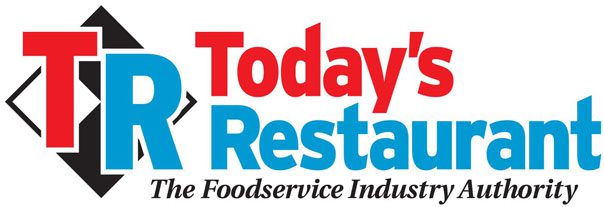
What to Do When Sales Are Down
By Aaron Allen
Embarking on a business turnaround isn’t just about quick fixes; it’s about setting a foundation for sustainable growth. We are seeing many established chains face the following challenges:
- Sales Performance: A consistent decline in sales, often reflecting broader struggles within the category or geography.
- Operational Inefficiencies: Gaps in operational practices that could be streamlined for better efficiency and cost management.
- Market Positioning: The need to better align the brand and offerings with current consumer preferences and market demands.
In the Discovery Phase, our initial focus is on fact-finding to accurately assess the current state. This phase is critical, as it establishes the baseline from which we plan all subsequent actions. We aim to identify key financial, operational, and market challenges affecting same-store sales and from there pinpoint strategic and operational gaps and prepare a targeted action plan.
For those ready to face the facts of these challenges — and work to overcome them — below are the first steps to take:
- Ask the Tough Questions
If there’s a feeling of uncertainty about the counter-measures being deployed to freeze or reverse the decline in restaurant chain sales, it is probably not without reason. The $4 trillion global restaurant industry is one of the most competitive in the world. And many mature restaurant markets are saturated, with growth only coming at someone else’s expense.
In every down cycle, though, there’s still someone who’s up — someone who’s out-performing, out-maneuvering, out-competing. It’s still important to ask the tough questions: Could I have done more? Can I do more? How much of this could be a failure of leadership to confront the tough problems and innovate our way out of the downturns?
- Do the Deep-Dive Due Diligence and Analysis
Before determining how to get out of a mess, companies must first identify why they got into it in the first place. Identifying the root of the problem is often the hardest, but most crucial, step. To properly prescribe a solution, chains must be sure they’ve properly diagnosed the problem.
Many chains think they already have analytics figured out, when they really just have backwards-facing P&Ls and haphazardly assembled forward-looking forecasts.
Too often, chains seem to have lost their survival instincts and find themselves scared stiff from poor traffic, same-store-sales decreases, or a stale concept. As a result, they wind up making the same marketing mistakes they’ve turned to time and again. Chains can hurl themselves out of a problem with tactical promotions. These quick-fixes can, however, lead to complacency and undermine the brand’s longevity.
- Frame the Issues Both Internally and Externally
Consumers are still going out to eat (even during restaurant recessions). The chains that find success in even the downturns think about how to grow a restaurant by taking the time to look internally: at their people, products, processes, and physical environment — as well as externally, to their competitors.
Competitors may not be who comes to mind most obviously. New forms of dining are continually cropping up (food trucks, new approaches to delivery, food ATMs), making seismic shifts in the industry, and siphoning off margins and mindshare from more traditional models. It’s important to take stock of the competition, and review what they’re doing — but not copy them. In fact, the key to salvation is often rooted in better differentiation, not frightened flock sensibilities.
Running a restaurant chain in the age of the fourth Industrial Revolution is not short on complications. We’ve worked with companies in nearly every corner of the globe, so we understand the shifting dynamics: the new categories, segments, cuisines, public/private ownership types, franchisees/franchisors, and so on. Today’s successful chains require a near-expert knowledge of globalization and localization (as well as a mindfulness of the impact of urbanization, mobile, digital, grocery, convenience, snacking occasion, shifting dayparts – the list goes on). The modern market complexities in what is already one of the most dynamic industries can quickly become overwhelming.
Just as a doctor must perform X-rays and tests to properly diagnose a patient, restaurant companies must invest in top-to-bottom analysis to properly diagnose their slumping sales. And while not as regulated as the medical profession, management has a responsibility to take measures to correctly identify the root causes of business issues before developing plans to address them.
- Develop a Phased Approach to Freeze/Reverse Restaurant Chain Sales Declines
The best advice is often the most obvious and in the case of slumping sales, it’s always important to get a second — objective — opinion. Before making permanent changes, challenge old assumptions. Make new ones, then challenge those, too, and refine them further.
As the old proverb goes, “Measure twice, cut once.” It’s challenging to discern exactly what is generating the best (or worst) return on investment if there are no solid goals or strategic plans in place. Aligning company objectives — cascaded down from an overarching strategic plan — is critical before making significant changes.
It’s easy to latch on to just a few disruptions in the industry that are making headlines. While delivery and drive-thru might be the hot-button topics right now (and are changing the industry dramatically), that does not mean it is the right strategy for every restaurant chain to employ.
- How to Grow a Restaurant? Build Consensus.
Not only does building consensus help contribute to and refine the ultimate response to a problem, but it builds company buy-in over simply announcing a plan. Every rollout should begin with gaining the support and understanding of the internal team, as studies have shown that people are five-to-one more committed to an initiative when they feel they’ve contributed to it in some way.
After gaining the support and influence of the team (who can add their own takes on the conclusions and offer advice), refine the plan, set budgets and timetables and seek a final authorization.
Keep the following tips in mind when seeking approval for a plan (or even for a marketing budget):
- Simplify the plan, distilling it into a few key messages (because it’s easier to persuade someone of something’s importance when it’s relayed as a story).
- Use powerful imagery. Iconography has always been a part of human culture and offers an effective way to get a point across.
- Tie rewards to the company’s performance and value, to help stakeholders imagine what success could look like.
- Enlist key stakeholders and ambassadors (agencies, product suppliers, experts from partner companies). People are five times more likely to be invested in a plan they feel they had a part in shaping.
- Measure and Monitor
Changing consumer preferences, the rise of social media, and continued economic uncertainty are putting pressure on many industries — and restaurants are certainly not exempt. Investing in technology to allow real-time insight into how a company is performing, minute by minute, has never been more important (especially following a big new rollout or project).
Throughout and after the rollout, measure Key Performance Indicators (KPIs) and utilize executive dashboards to gain insight into how the plan is impacting various aspects of the business. Companies can also monitor social channels, which offer an up-to-the-minute look at where guests and associates stand on any big brand changes.
Many companies (especially those in the restaurant business) aren’t crazy about change. But how can you grow a restaurant if unwilling to change? In thrive-to-survive industry, those who fail to evolve wind up several years behind their more modern counterparts.
- Analyze and Announce
The decisions made when navigating out of a downturn can affect not only the P&L statement, but also set off a ripple effect impacting people’s lives, both in and out of the organization. Analyze the impact (on guests, employees, and the bottom line) of a sales turnaround plan to take note of what worked, what didn’t, and why is an often-underemphasized step.
Did the tests and results offer a conclusive reason for the decline in sales? It’s not always possible to isolate each individual impact. But identifying which parts of the plan were successful and which did not yield as high of returns is exponentially helpful when evaluating the performance and determine which elements should be repeated or eliminated.
Examine performance variables to determine whether there were any patterns or anomalies. What should be repeated? What should be discontinued? What might require more (or less) investment?
Undertake a final debrief to document and archive the lessons learned, any results that were achieved, and plans moving forward. Share those results. Many on the team likely contributed to its implementation and want to know what resulted. Likewise, perhaps some team members deserve to be rewarded or recognized — as this ups the chances of them contributing expertise in the future.
Finally, start back at the top, carrying any learnings into the next sequence in a phased approach. Keep mid- and long-range initiatives on a concurrent path with short-term objectives, and always honor the brand constitution and company vision along the way.
Strategic Measures Will Ultimately Pay Off
As Einstein said, a problem can’t be solved with the same line of thinking that created it. And while some restaurant chain sales are down, there are still operators whose sales are up. For those looking to improve their company’s bottom line, rather than just keep track of it, the most powerful lever at their disposal just might be themselves (although some outside help never hurt).
About Aaron Allen & Associates
Aaron Allen & Associates works alongside senior executives of the world’s leading foodservice and hospitality companies to help them solve their most complex challenges and achieve their most ambitious aims. We have helped evaluate and engineer menus for some of the world’s largest restaurant brands, as well as helped restaurant companies around the world drive revenues, increase profits, and enhance the guest experience through improved marketing, messaging, and menu engineering.
Our clients span six continents and 100+ countries, collectively posting more than $300b in revenue. Across 2,000+ engagements, we’ve worked in nearly every geography, category, cuisine, segment, operating model, ownership type, and phase of the business life cycle.
To read more great articles you can use, visit www.trnusa.com





Recent Comments